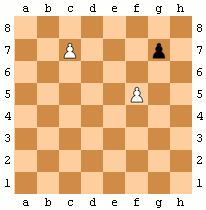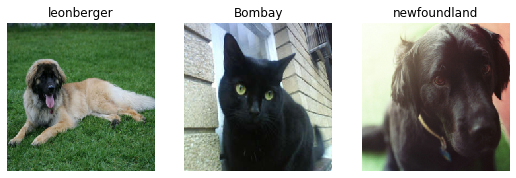#hide_input
print('The comment #hide_input was used to hide the code that produced this.')The comment #hide_input was used to hide the code that produced this.A tutorial of fastpages for Jupyter notebooks.
A #hide comment at the top of any code cell will hide both the input and output of that cell in your blog post.
A #hide_input comment at the top of any code cell will only hide the input of that cell.
The comment #hide_input was used to hide the code that produced this.put a #collapse-hide flag at the top of any cell if you want to hide that cell by default, but give the reader the option to show it:
put a #collapse-show flag at the top of any cell if you want to show that cell by default, but give the reader the option to hide it:
#collapse-show
cars = 'https://vega.github.io/vega-datasets/data/cars.json'
movies = 'https://vega.github.io/vega-datasets/data/movies.json'
sp500 = 'https://vega.github.io/vega-datasets/data/sp500.csv'
stocks = 'https://vega.github.io/vega-datasets/data/stocks.csv'
flights = 'https://vega.github.io/vega-datasets/data/flights-5k.json'place a #collapse-output flag at the top of any cell if you want to put the output under a collapsable element that is closed by default, but give the reader the option to open it:
Charts made with Altair remain interactive. Example charts taken from this repo, specifically this notebook.
# single-value selection over [Major_Genre, MPAA_Rating] pairs
# use specific hard-wired values as the initial selected values
selection = alt.selection_single(
name='Select',
fields=['Major_Genre', 'MPAA_Rating'],
init={'Major_Genre': 'Drama', 'MPAA_Rating': 'R'},
bind={'Major_Genre': alt.binding_select(options=genres), 'MPAA_Rating': alt.binding_radio(options=mpaa)}
)
# scatter plot, modify opacity based on selection
alt.Chart(df).mark_circle().add_selection(
selection
).encode(
x='Rotten_Tomatoes_Rating:Q',
y='IMDB_Rating:Q',
tooltip='Title:N',
opacity=alt.condition(selection, alt.value(0.75), alt.value(0.05))
)alt.Chart(df).mark_circle().add_selection(
alt.selection_interval(bind='scales', encodings=['x'])
).encode(
alt.X('Rotten_Tomatoes_Rating', type='quantitative'),
alt.Y('IMDB_Rating', type='quantitative', axis=alt.Axis(minExtent=30)),
# y=alt.Y('IMDB_Rating:Q', ), # use min extent to stabilize axis title placement
tooltip=['Title:N', 'Release_Date:N', 'IMDB_Rating:Q', 'Rotten_Tomatoes_Rating:Q']
).properties(
width=500,
height=400
)# select a point for which to provide details-on-demand
label = alt.selection_single(
encodings=['x'], # limit selection to x-axis value
on='mouseover', # select on mouseover events
nearest=True, # select data point nearest the cursor
empty='none' # empty selection includes no data points
)
# define our base line chart of stock prices
base = alt.Chart().mark_line().encode(
alt.X('date:T'),
alt.Y('price:Q', scale=alt.Scale(type='log')),
alt.Color('symbol:N')
)
alt.layer(
base, # base line chart
# add a rule mark to serve as a guide line
alt.Chart().mark_rule(color='#aaa').encode(
x='date:T'
).transform_filter(label),
# add circle marks for selected time points, hide unselected points
base.mark_circle().encode(
opacity=alt.condition(label, alt.value(1), alt.value(0))
).add_selection(label),
# add white stroked text to provide a legible background for labels
base.mark_text(align='left', dx=5, dy=-5, stroke='white', strokeWidth=2).encode(
text='price:Q'
).transform_filter(label),
# add text labels for stock prices
base.mark_text(align='left', dx=5, dy=-5).encode(
text='price:Q'
).transform_filter(label),
data=stocks
).properties(
width=500,
height=400
)You can display tables per the usual way in your blog:
# display table with pandas
df[['Title', 'Worldwide_Gross',
'Production_Budget', 'Distributor', 'MPAA_Rating', 'IMDB_Rating', 'Rotten_Tomatoes_Rating']].head()| Title | Worldwide_Gross | Production_Budget | Distributor | MPAA_Rating | IMDB_Rating | Rotten_Tomatoes_Rating | |
|---|---|---|---|---|---|---|---|
| 0 | The Land Girls | 146083.0 | 8000000.0 | Gramercy | R | 6.1 | NaN |
| 1 | First Love, Last Rites | 10876.0 | 300000.0 | Strand | R | 6.9 | NaN |
| 2 | I Married a Strange Person | 203134.0 | 250000.0 | Lionsgate | None | 6.8 | NaN |
| 3 | Let's Talk About Sex | 373615.0 | 300000.0 | Fine Line | None | NaN | 13.0 |
| 4 | Slam | 1087521.0 | 1000000.0 | Trimark | R | 3.4 | 62.0 |
You can reference local images and they will be copied and rendered on your blog automatically. You can include these with the following markdown syntax:
![]()
Remote images can be included with the following markdown syntax:

Animated Gifs work, too!


You can include captions with markdown images like this:

Typing I give this post two :+1:! will render this:
I give this post two :+1:!
Typing > twitter: https://twitter.com/jakevdp/status/1204765621767901185?s=20 will render this:
twitter: https://twitter.com/jakevdp/status/1204765621767901185?s=20
Typing > youtube: https://youtu.be/XfoYk_Z5AkI will render this:
youtube: https://youtu.be/XfoYk_Z5AkI
Typing > Warning: There will be no second warning! will render this:
Warning: There will be no second warning!
Typing > Important: Pay attention! It's important. will render this:
Important: Pay attention! It’s important.
Typing > Tip: This is my tip. will render this:
Tip: This is my tip.
Typing > Note: Take note of this. will render this:
Note: Take note of this.
Typing > Note: A doc link to [an example website: fast.ai](https://www.fast.ai/) should also work fine. will render in the docs:
Note: A doc link to an example website: fast.ai should also work fine.
You can have footnotes in notebooks, however the syntax is different compared to markdown documents. This guide provides more detail about this syntax, which looks like this:
{% raw %}For example, here is a footnote {% fn 1 %}.
And another {% fn 2 %}
{{ 'This is the footnote.' | fndetail: 1 }}
{{ 'This is the other footnote. You can even have a [link](www.github.com)!' | fndetail: 2 }}{% endraw %}For example, here is a footnote {% fn 1 %}.
And another {% fn 2 %}
{{ ‘This is the footnote.’ | fndetail: 1 }} {{ ‘This is the other footnote. You can even have a link!’ | fndetail: 2 }}